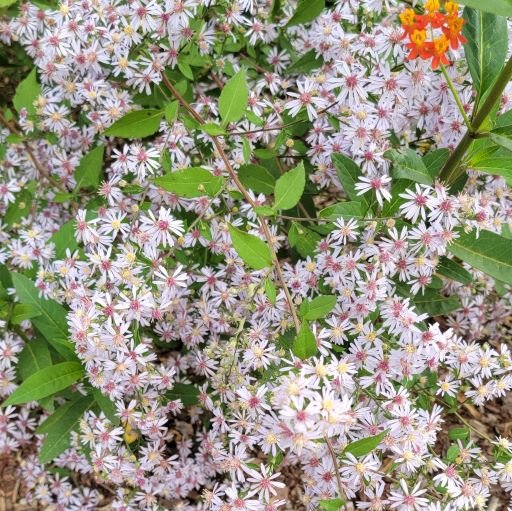 Image 1 of 4
Image 1 of 4

 Image 2 of 4
Image 2 of 4

 Image 3 of 4
Image 3 of 4

 Image 4 of 4
Image 4 of 4





Symphyotrichum cordifolium, Heart-leaved Aster, Quart pot
Symphyotrichum cordifolium, Heart-leaved Aster
PS to Shade, Zone 3, blooms September-October, 3’ x 2’, medium to medium dry.
We are sorry to say that Wild Type is having germination issues with this aster, we will not be getting it for 2025. 4/7/25
This aster has hairy stems and a distinctive structure where the leaves clasp the stem, almost encircling it. Flowering occurs from August to November, with the lower leaves often withering by the time of flowering. The abundant flower heads with yellow centers and like other asters, puts on a late season show. When the centers of the tiny blooms change to pink, you know a bee has been at work and the flower has been pollinated! The wonderful array of flowers attracts butterflies and bees, and also makes an excellent cut flower. Easily grown from seed and often it will abundantly self-seed in the garden if not deadheaded. If too much self-seeding occurs, you can dig up seedlings to share with others who have butterfly gardens. Asters are important late-season plants to provide nectar and pollen for beneficial insects, butterflies and bees.
Asters are considered essential Keystone plants. They support 100 species of caterpillars and more than 30 species of Specialist Bees rely on the pollen asters produce.
Attracts a wide variety of butterflies, native bees, honey bees, soldier beetles, bee flies and the seeds are often eaten by birds. Asters host caterpillars of the Silvery Checkerspot Butterfly, Pearl Crescent Butterfly and several species of moths.
Symphyotrichum cordifolium, Heart-leaved Aster
PS to Shade, Zone 3, blooms September-October, 3’ x 2’, medium to medium dry.
We are sorry to say that Wild Type is having germination issues with this aster, we will not be getting it for 2025. 4/7/25
This aster has hairy stems and a distinctive structure where the leaves clasp the stem, almost encircling it. Flowering occurs from August to November, with the lower leaves often withering by the time of flowering. The abundant flower heads with yellow centers and like other asters, puts on a late season show. When the centers of the tiny blooms change to pink, you know a bee has been at work and the flower has been pollinated! The wonderful array of flowers attracts butterflies and bees, and also makes an excellent cut flower. Easily grown from seed and often it will abundantly self-seed in the garden if not deadheaded. If too much self-seeding occurs, you can dig up seedlings to share with others who have butterfly gardens. Asters are important late-season plants to provide nectar and pollen for beneficial insects, butterflies and bees.
Asters are considered essential Keystone plants. They support 100 species of caterpillars and more than 30 species of Specialist Bees rely on the pollen asters produce.
Attracts a wide variety of butterflies, native bees, honey bees, soldier beetles, bee flies and the seeds are often eaten by birds. Asters host caterpillars of the Silvery Checkerspot Butterfly, Pearl Crescent Butterfly and several species of moths.